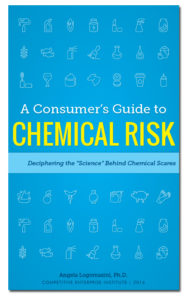When environmentalists and government agencies label chemicals as carcinogens, they often point to animal tests, particularly rodent tests. Yet consumers should be skeptical of these claims because the effects found in rodent tests are of limited relevance to humans.
Still, activists usually exaggerate the importance of these tests and downplay the limitations. Tests on rodents involve administering massive amounts of chemicals to animals bred to be highly susceptible to cancer. Researchers then extrapolate the possible effects of such chemicals on humans, who may be exposed to small amounts of the same chemical over their lifetimes.
First, we should ask: Are the impacts on rodents relevant to humans? As researchers Sir Richard Doll and Richard Peto note in their seminal work on cancer causes, some chemicals found to be carcinogenic in humans have not produced cancerous tumors in rodent experiments. (1) In fact, for many years, cigarette smoke failed to produce malignant tumors in laboratory animals even though tobacco may be the leading cause of cancer in the United States. These discordant effects of chemicals in animals and humans underscore the difficulty of relying on animal results to estimate human risks.(2)
Second, researchers question whether the extremely high doses administered in the lab are relevant even to low-level exposures in the real world. Researchers Bruce Ames and Lois Swirsky Gold of the University of California, Berkeley, demonstrate why we need not be concerned about low-level exposure to “rodent carcinogens,” noting that such chemicals pose no more risk than that posed by the many natural, unregulated substances that are common and accepted parts of a healthy diet.(3) Ames and Gold report:
- Although 212 of 350 of the synthetic chemicals examined by various agencies were found to be carcinogenic at the massive doses given to rodents, 37 out of 77 of the natural substances tested were also found carcinogenic in rodent studies employing the same methodology.
- We safely consume thousands of natural chemicals every day at much higher levels than chemicals that have been labeled carcinogens because they caused cancer when administered in massive doses to rodents. For example, humans consume thousands of natural pesticides, which plants naturally produce as a biological defense mechanism.
- Ames and Gold estimate that 99.99 percent (by weight) of the pesticides humans consume are natural pesticides.
- The average intake of natural carcinogens found in plant foods is about 1,500 milligrams per person each day, while the average intake of human-made pesticides is 0.09 milligrams per day.
- The commonness of exposures to chemicals is demonstrated by the identification of 826 volatile chemicals in roasted coffee. Although only 21 of those chemicals have been put through laboratory risk assessments, all but 5 were found to be carcinogenic in laboratory rat tests. A cup of coffee contains at least 10 milligrams of “carcinogenic” chemicals.
Carcinogens that cause cancer in rodent studies exist in apples, bananas, carrots, celery, coffee, lettuce, orange juice, peas, potatoes, and tomatoes at levels thousands of times greater than exposures found in drinking water.(4)
Browse the terms on the sidebar of this webpage for more details and/or download a copy of A Consumer’s Guide to Chemical Risk: Deciphering the “Science” Behind Chemical Scares.
(1) Richard Doll and Richard Peto, “The Causes of Cancer: Quantitative Estimates of Avoidable Risks of Cancer in the United States Today,” Journal of the National Cancer Institute 66, no. 6 (1981): 1191–308.
(2) Ibid.
(3) Bruce N. Ames and Lois Swirsky Gold, “Too Many Rodent Carcinogens: Mitogenesis Increases Mutagenesis,” Science 249, no. 4976 (August 31, 1990): 1487.
4. See Appendix A of National Research Council, Committee on Comparative Toxicology of Naturally Occurring Carcinogens, Carcinogens and Anticarcinogens in the Human Diet: A Comparison of Naturally Occurring and Synthetic Substances (Washington DC: National Academies Press, 1996).


